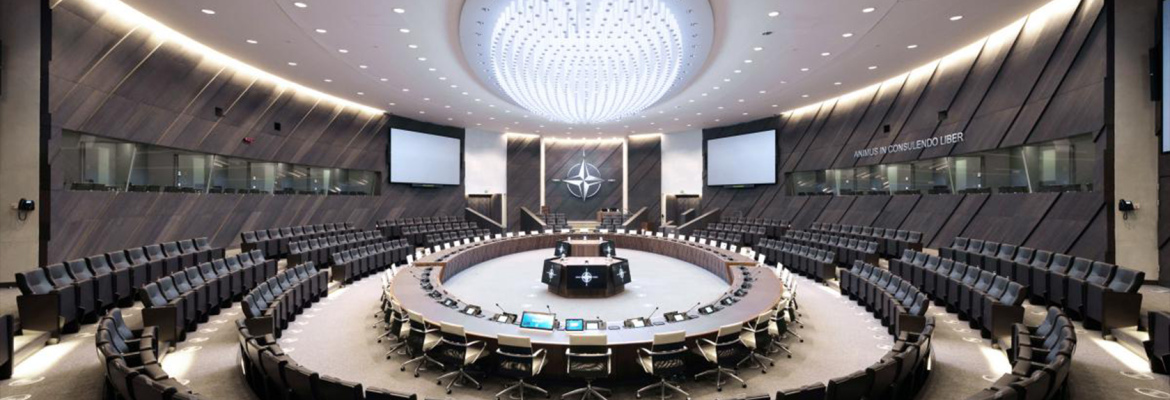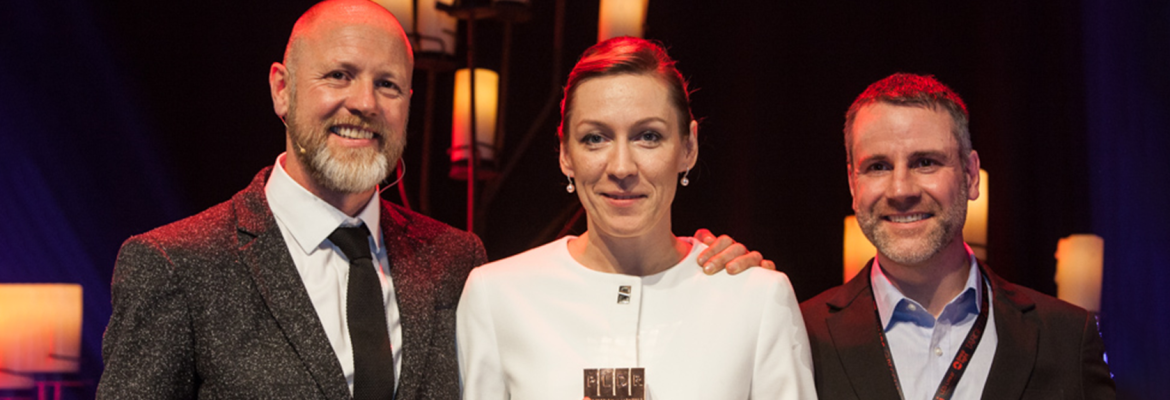Beacons of Light: Dr Karolina M. Zielinska-Dabkowska
October 2023
October 2023
DW Windsor is powered by people with a shared passion for light, committed to delivering outstanding lighting solutions. To celebrate those who share our passion, we've collected more individuals who positively impact our community and shine a light on our industry. Through this series of interviews, we are highlighting a number of unique and inspiring people who are leading the way as Beacons of Light.
Asst. Prof. Dr. Karolina M. Zielinska-Dabkowska IALD, IES, MSLL, RIBA is an architect and an award-winning practicing lighting designer.
She is actively engaged in the work of international organisations such as the International Association of Lighting Designers (IALD), the Illuminating Engineering Society (IES), International Commission of Illumination (CIE) and DarkSky International, providing guidelines and sharing best practices for nighttime illumination in the built and natural environment.
She has participated in a number of international conferences and has co-authored two articles in Nature and one in Science magazine. Karolina is the creator of the ROLAN Conference and ROLAN Manifesto.
We met with Dr Karolina to discuss her renowned work, including the creation of the ROLAN Manifesto and her passion towards suitable dark sky lighting.
More than 20 years ago, when I was a student of Architecture at HAWK - University of Applied Science and Arts in Hildesheim, Germany.
I always felt something was missing with architecture, however, I didn’t know what it was. I had a friend who had studied for a bachelor’s degree in Lighting Design at HAWK, and she recommended that I take part in the European Lighting Designers’ Association (ELDA+) lighting design workshop in Unna, Germany. It was here that I co-illuminated an old cemetery, and the experience was so fulfilling that I wanted to learn more about this new medium. Later, I took an elective seminar on architectural lighting design with Prof. Michael Rohde, and after this, I joined his L-plan lighting team in Berlin.
 |
Dr Karolina M. Zielinska-DabkowskaAsst. Prof. Dr. Karolina M. Zielinska-Dabkowska IALD, IES, MSLL, RIBA is an architect and an award-winning practicing lighting designer. She is also an Assistant Professor at the Faculty of Architecture, Gdansk University of Technology, Poland, and Co-Founder of GUT LightLab, where she conducts research on various aspects of light and lighting in the built environment. |
I always wanted to be a designer. I trained as an architect first before becoming a lighting designer. This experience working with top architects on various projects was really beneficial because I was speaking their language, and on top of that, I had experience and knowledge about lighting. I was seen by them as ‘an architect plus’. Currently, I am also a researcher and educator at the Gdańsk University of Technology in Gdańsk, Poland.
While working with the Speirs Major London office, I was involved in the Greenwich Peninsula Lighting Masterplan project. It was the first project where our client employed a biodiversity consultant whose role was to check if our lighting was going to have any negative impact on the environment. At the time, this was a new topic to me, so I had to learn fast. I also realised that unless I understood research and also how to connect and communicate with researchers, I would not be able to get satisfactory answers to my questions. There was this noticeable obstacle that existed because researchers didn’t want to talk to me as they assumed I was ‘just’ a lighting practitioner. I knew then that I needed to obtain a PhD degree.

Main NATO HQ building with the main Council Chamber. The custom-made colour-changing chandelier was created when lighting designers uncommonly used LEDs @ NATO/ Marc/Detiffe
In terms of design/project experience, I would say being in charge of the indoor and outdoor illumination of the Main NATO HQ Building complex in Brussels (BE), due to its complexity and security, as well as the urban lighting masterplan for Porto Montenegro in Tivat (ME). But I also had the privilege of working on numerous well-known projects as a team member, such as the world's tallest building, the Burj Khalifa in Dubai (UEA), the Tribute in Light Memorial art installation in New York (US), the external illumination of the Granary Building and Granary Square in London (UK), the external lighting for the new astronomical observatory cone at the Royal Observatory Greenwich (UK), and the external and internal illumination of the new JetBlue terminal for the Kennedy Airport in New York (USA).
In terms of research experience, in 2013 I obtained my PhD in technical sciences with honours from the Faculty of Architecture, Gdańsk University of Technology. In the research "The art of illumination as a tool for creating architectural form", among other things, I translated my practical-based knowledge in the field of light architecture into important guidelines for designers. In 2014, this work was recognised with the Polish Prime Minister's Research Award. In 2015, for my work and scientific research on the non-visual effects of light on humans, flora and fauna, I was awarded the international PLD-R Professional Lighting Design Recognition Award in the Research category. In 2020, I was also awarded the DarkSky Galileo Research Award.
However, I am most proud of the many students and lighting designers I have trained who are now working for the top lighting consultancies at a director and senior level.
Challenges have involved being from a foreign country, being a woman, and also being young for the professional roles I was given. Often, the meetings comprised mainly of men who would not treat me equally during the first meetings; it was only when they realised my experience and acknowledged I had something of value to contribute that my role was accepted. I am very happy this attitude is now changing!
Today, we have amazing lighting technology (light sources, luminaires and lighting controls), which can allow us to start our design with darkness and only add light if it supports nocturnal placemaking and protects a view of the stars.
I no longer solely design illumination just to create memorable, highly aesthetic spaces at night. My approach is unique and it’s centred on the user and their habitable environment. This involves basing my designs on the newest research knowledge in the fields of astronomy, biology, medicine and ecology, whilst also applying practical experience. My lighting design is born out of the desire to develop nighttime environments which exist in harmony with interior design, architecture, urban planning and the landscape. Essentially, I am a problem solver. My love for integrated lighting design involves a hands-on process, lighting mock-ups and tests on-site in order to find the best possible lighting answers.
I would love to work with James Turrell on one of his projects located in the natural environment. In 2019, the IALD Alpine Chapter I co-founded with a few other designers organised a visit to his Skyspace in Lech, Austria to experience his artwork in the mountain environment. It was such an unforgettable experience as Turell is a genius who is able to touch our inner core via the medium of light.
Teamwork and effective communication are equally important skills to have. A team of creative people working on difficult tasks in projects will achieve better results and offer different solutions than individuals who work alone. Effective communication for me includes active listening, giving and taking feedback, empathy, and respectfulness.

In 2015, Zielinska-Dabkowska was awarded the International Professional Lighting Design Recognition Award in the category "Research" for her work and scientific research about the non-visual effects of light on humans, flora and fauna. @ PLDC 2015
I encourage others to be curious and question things. Larry King, the American television and radio host, once said, “The secret of success is an absolute ungovernable curiosity”, and I fully agree. Also, it’s important to really be in love with lighting to help overcome the many challenges involved and to carry you through the long working hours.
I am very thankful for this recognition. I have met many amazing lighting designers throughout my career with whom I’ve had the opportunity to collaborate and who have inspired me.
The person who has been and continues to be my beacon of light is my Mum, who recently passed away. She was the mother of five children, and in spite of this important role, she enjoyed a successful career juggling many things at the same time.
After the pandemic and the switch-off for external lighting to save energy, I felt the lighting field needed a complete change. In order to be recognised as professionals, we could not pretend that light pollution with all its negative consequences does not exist. We needed to embrace the situation in an appropriate manner.
I had this idea to connect the lighting practice with research in the form of an online conference, and so, the Responsible Outdoor Lighting and Night (ROLAN) Conference was born. I approached the Society of Light and Lighting (SLL) with my conference concept and a list of agreed speakers, and we collaborated on further details. Other lighting organisations were invited to become partners, and as the conference was a big success, on the last day, I proposed to create a manifesto, which we published in winter 2022.

Site-sensitive Heritage Crane illumination as part of the Porto Montenegro lighting masterplan, designed to support the UNESCO Heritage Kotor Bay environment with lighting scene setting and minimal illumination after midnight. @Paul Traynor
There are various research publications and initiatives that extend our understanding of the adverse impact of light pollution on the natural world, human health, flora, fauna and the night sky. In June this year, the American Association for the Advancement of Science (AAAS) published review articles and a policy forum in the special section of their peer-reviewed academic journal Science Magazine, which was titled ‘Light Pollution’. This recent issue confirmed the gravity and relevance of the topic as this weekly journal publishes top research themes from around the world.
There is no point of return if we want to survive as an industry. We cannot design as we used to 20 years ago with uncontrolled, wasted light. We should always keep in mind that the external illumination we design today might have multiple impacts, and our role is to minimise them. By following the principles outlined in the ROLAN Manifesto, we can provide a good example.
Lighting professionals should work with architects, town planners, landscape designers, manufacturers, local authorities, lighting advocates, ecologists, and researchers to keep up to date with recent findings. If you understand the research and know how to apply it, and you also know how to access the information and translate it into your lighting practice, an ideal outcome can be achieved.
It’s possible to create human spaces with outdoor lighting that is beautiful, and at the same time, have lighting that also supports comfort, health and well-being, and is respectful to the environment. Instead of focusing on human-centered design, we should be aiming for environment-centered design that takes into consideration all living beings (including humans) and ecosystems.
Thank you to Dr Karolina for taking the time to share these thoughts with us. To find out more about the ROLAN Manifesto here.